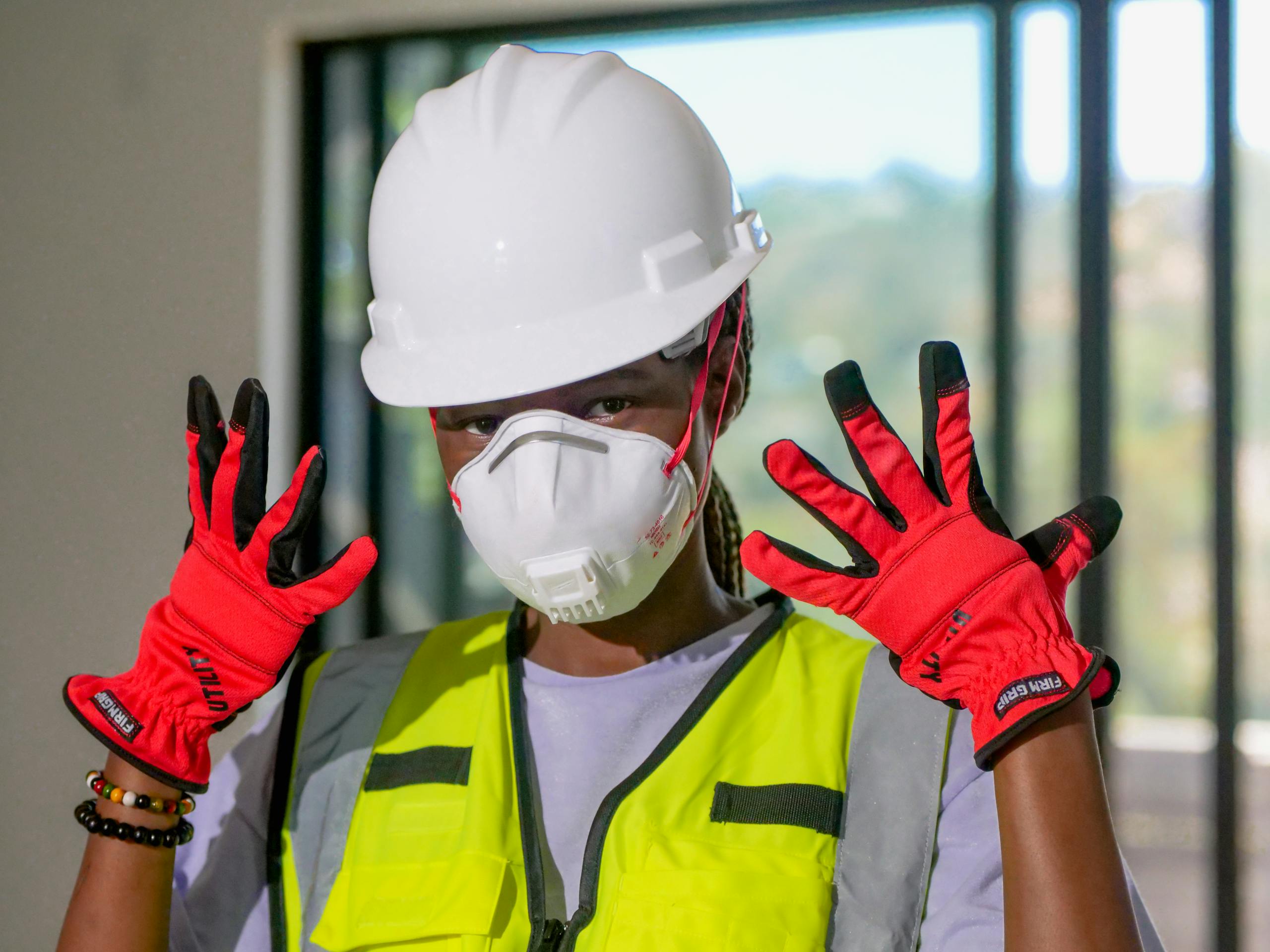Last Updated on 4 September 2025 by Rebecca Young
What is respiratory protective equipment (RPE), and why is it so important to provide these devices for the safety of your employees? Certain work activities may result in harmful substances contaminating the air in the form of dust, mist, gas or fumes. Respiratory protective equipment protects the wearer from a variety of hazards. It suits a variety of work situations. And matches the specific requirements of the wearer.
What is RPE used for?
Examples of times when a worker might use respiratory protective equipment are when:
- Cutting a material such as stone, concrete or wood.
- Using a liquid containing volatile solvents.
- Handling a dusty powder.
Manufacturing workers may also need to work in areas where oxygen levels are low, such as confined spaces such as chambers or tanks. An RPE mask is designed to protect the wearer from these hazards.
Respiratory protective equipment and the types of air respirators
You will require respiratory protective equipment that is adequate and suitable to ensure the wearer is protected. This means:
- Adequate: It is appropriate for the hazard and reduces exposure to the level required to protect the wearer’s health.
- Suitable: It is ideal for the wearer, task, and environment so that the wearer can work freely and without additional risks due to the respiratory equipment.
Selection of respiratory protective equipment
To select respiratory protection equipment that will protect the wearer, you will need a basic understanding of the following:
- The hazardous substance and the amount in the air (exposure).
- The form of the substance in the air (e.g. carbon monoxide, gas, particle, vapour).
- The type of work carried out.
- Any specific wearer requirements, such as other personal protective equipment or a need for spectacles.
There are two main types of respiratory protection: respirators and breathing apparatus.
Respiratory devices are classed as filtering devices and use filters to remove contaminants from the air breathed in. These respiratory equipment devices can either be:
- Non-powered respirators rely on the wearer’s breathing to draw air through the filter.
- Powered respirators are devices that use a motor to pass air through the filter, supplying a supply of clear air.
A breathing apparatus is a device that needs a supply of breathing-quality air from an independent source. Examples include air cylinders or air compressors.
What is RPE? Breathing apparatuses and respirators
Breathing Apparatuses and Respirators are available in many different styles, and these are divided into two main groups:
- Masks (or tight-fitting facepieces) rely on a good seal on the wearer’s face. Both powered and non-powered respirators and breathing apparatus are available. A face fit test must be carried out to ensure that an RPE mask can protect the wearer.
- Loose-fitting facepieces rely on enough clean air being provided to the person wearing them to prevent any kind of containment from leaking in (these are only available as powered breathing apparatus or powered respirators). Some examples are hoods, helmets, and suits.
When should respiratory protective equipment be used?
- If you still breathe in any contaminated air, despite other controls that may be in place, e.g. extraction systems.
- If there is short-term or infrequent exposure, other controls could be impractical.
- While putting other controls in place.
- If you must provide respiratory protective equipment for safe exit in an emergency.
- Where there is a temporary failure of controls, or you need to provide an RPE mask for emergency work.
- When emergency rescue by trained personnel is necessary.
Respiratory Protective Equipment FAQs
What does RPE mean?
The RPE meaning is respiratory protective equipment and is personal protective equipment used in work situations that require protection from harmful substances such as dust and powders, poisonous liquids and during the cutting of wood or stone.
With respiratory protective equipment, why are filter types so important?
It can be overwhelming looking through the many different filter types on the market. However, choosing the correct respirator filter types is extremely important for protecting your employees. Only by selecting the correct type of filter and respiratory protective equipment, meaning your team is fully protected, are you complying with all your health and safety responsibilities as an employer.
Related Blogs







